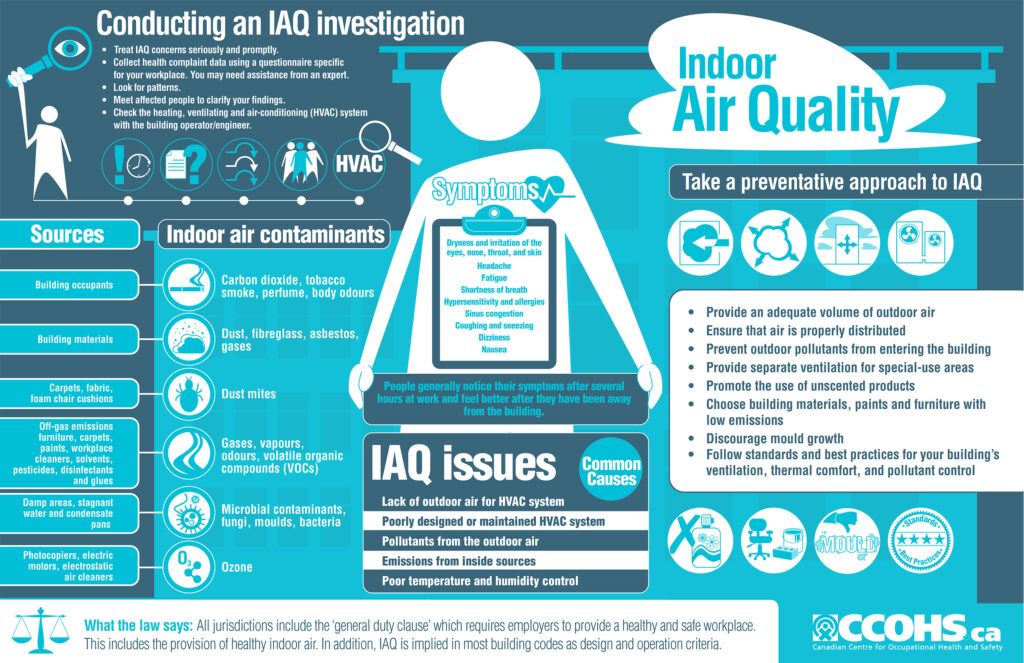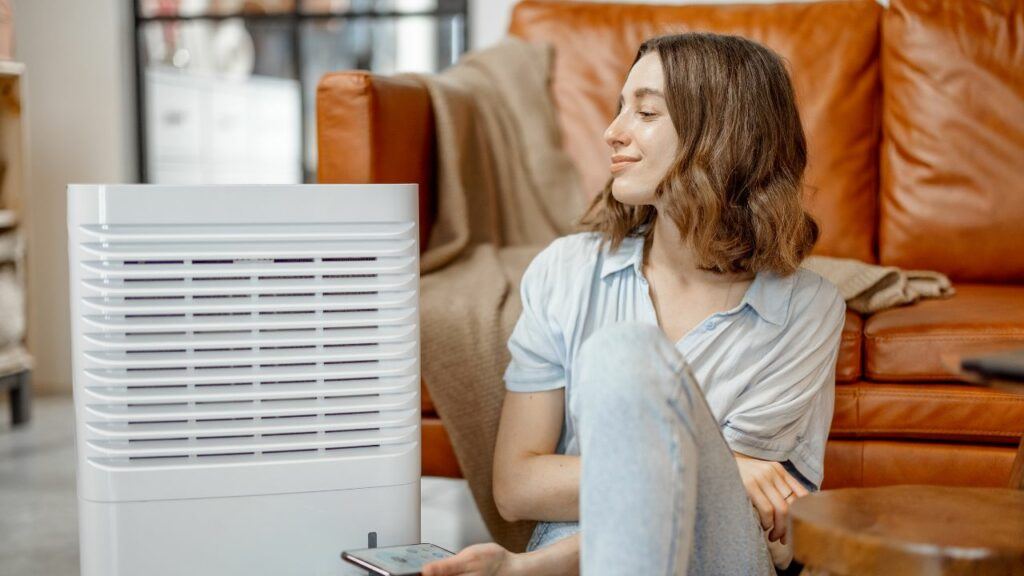Indoor air is not as good as outdoor air. Many health conditions experienced by employees are caused by indoor air pollution, which is why it is vital to keep office air clean and safe. This not just promotes workers but also holds their well-being secure.
Indoor Air Quality (IAQ) Overview

Indoor air quality explains how the air inside the facility or building affects a person’s comfort, well-being, and capability to function. It is the main issue for employees, businesses, as well as rental supervisors, and managers, as indoor air can have a massive effect on workers’ well-being and productivity.
U.S Environmental Protection Agency conducted many studies and found that indoor air pollution is the main issue. While many commercial structures don’t have serious problems, even well-maintained ones can have incidents of poor indoor air.
The Key Causes of Poor Air Quality in the Office
A single leading cause of indoor air quality problems can be hard to pin down because the air quality in an office environment is determined by a multifaceted combination of non-human and human factors:
Tenant actions or behaviors in the office include cooking in cafeterias, assembling in poorly ventilated areas, and using specific cleaning materials.
Ventilation, which includes the condition of mechanical ventilation systems and air filters
Quality of outdoor air of the office, and how much is being delivered via ventilation.
While there are instances where you may pinpoint a single issue, like poor HVAC maintenance, as the main reason, most scenarios will be more complicated. The usual contributing elements are as follows:
Indoor Contaminants
Certain items, materials, tools, or equipment inside the office can produce contaminants detrimental to well-being- volatile organic compounds, ozone, and particulate matter.
These could take into account clearing and building materials, furnishing, building components, and office supplies.
Problems with Air Outside
While fresh air is frequently seen as the remedy to poor indoor air quality, there are times and places wherein the ambient outdoor air can be poorer than indoors.
A good example would be places that suffer from wildfires, natural occurrences which can increase particular matters to dangerous levels. Drawing in this air will worsen than boost the air quality in the office.
Other usually air pollutants that can happen outside could be dust and pollen, vehicle exhaust, industrial pollution, unsanitary debris, and dumpers.
Highly polluted air outside impacts the quality of air inside the building and causes HVAC systems to degrade faster.
Cleanliness and Maintenance
A poorly and weakly maintained space draws biological contaminants such as viruses, bacteria, dust mites, fungi, pollen, and animal dander.
These can happen because of untreated spills, poor cleaning practices, or inadequate humidity and can cause asthma, allergies, and infections.
HVAC Systems and Ventilation
HVAC covers ventilation and the associated systems that heat, cool, and filter the air inside the building. These need to be regularly maintained; ignoring maintenance will cause problems like poor filtering, uncomfortable thermal conditions, and inadequate air circulation.
How to Improve Indoor Air Quality – Ideas on Where to Begin
It is complex to measure air quality; improving it can be even harder. Many factors are at play, and a different lack of one size fits all solutions. Typically, companies will use some of these techniques to boost the quality of air in offices:
Proper HVAC Maintenance
Maintaining HVAC systems regularly is vital, but many people fail to take in that this doesn’t just signify replacing the filters and cleaning air vents based on the manufacturer’s suggested schedule; dusty environments and high outdoor pollution can result in HVAC systems deteriorating faster.
Proactive air quality monitoring can alert you to problems with HVAC and trigger a further assessment.
Source Control
Auditing office supplies regularly and office equipment used for maintenance, construction, and cleaning can improve office air quality.
Aim to lessen the use of VOC emitters. You need to maintain clear policies and be in touch with workers and third-party service providers.
Make sure that you’re not blocking ventilation ducts and airflow. Device or work out the patterns of airflow in the structure to make sure fresh air is liberally circulating to all corners or spaces.
Adjust Ventilation according to Outdoor Air Quality
If a wildfire causes the outdoor air to worsen, you may need to lessen the level of ventilation during these instances.
Timely data regarding air quality outdoors can be utilized as a trigger for alterations in ventilation schedules.
Using Air Quality Measurements to Determine Indoor Air Quality Issues

The information you obtain from the air quality monitors will assist you in determining what can be causing the problem and recommend possible solution pathways.
Use Air Purifiers or Air Cleaners in the Working Area to Improve Air Quality

To maintain good workplace indoor air quality, you must invest in high-quality air purifiers or air cleaners.
Air purifiers and room air cleaners are powerful pollutant-trapping machines, making a difference for those with asthma or allergies.
What is more, there are models made particularly for the desktop, which take up a small area, run quietly, and are energy efficient. Read this article we wrote about the top air purifiers you can use in your office cubicle and small office that you can just plug right into any outlet.
Why Indoor Air Quality Matters
Remember that your workers are the first to notice any smells or uncomfortably hot and stuffy office buildings indicative of an air quality issue.
Encouraging them to report concerns or complaints is one of the best lines of defense in securing and improving the air- for enjoyment and comfort.
As the elements which add to indoor air quality are diverse, which range from the airflow quality in fans to the absence or presence of mold and dust, there are chances at many levels to make improvements.
Routine cleaning and other good housekeeping practices like regular HVAC system maintenance and use of the best products like air purifiers that eliminate pollutants on the spot for an immediate benefit- cleaner and healthier air is within reach.
Conclusion
Office air quality must be the primary concern in the workplace as it affects the well-being and health of the employees and staff.
Poor IAQ can boost the risk of many health issues, from respiratory diseases to infections. It can also compromise mental health.
Remember that one can do things to promote indoor air quality in the office, such as keeping the area clean, maintaining the HVAC system, changing filters regularly, and doing regular air assessments.

